Florida's Wildflowers
Blues and Purples
Alligator flag, Sandhill dayflower, Climbing dayflower, Lilac tasselflower, Savannah False Pimpernel, Ohio spiderwort, Mexican petunia, Madagascar periwinkle
Alligator Flag - Thalia geniculata
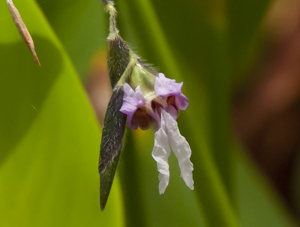
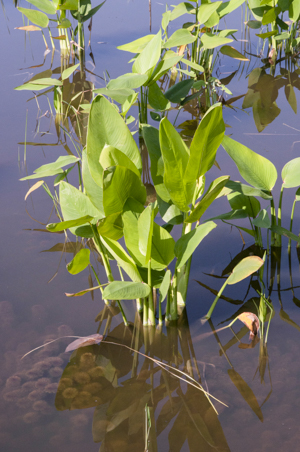
Family - Marantaceae
Habitat - Swamps, Marshes, margins of lakes, ponds and freshwater creeks.
Description - Herbaceous Florida native plant, broad lanceolate leaves may exceed a foot in length. Branched inflorescence rising above plant 6 feet or more in the summer and fall.
Sandhill Dayflower - Commelina erecta L.

Family - Commelinaceae
Habitat - Found in a variety of habitats, from xeric sand scrub to wet prairie.
Description - Native perennial, forb/herb up to 12 inches tall. Named for the flower which lasts approximately 24 hours.
Flower - 1 inch wide with 2 larger blue petals, 1 small white petal below. Named for the flower which lasts approximately 24 hours.
Climbing Dayflower - Commelina diffusa
%20copy_small1.jpg)
Family - Commelinaceae
Found in a variety of habitats. Introduced perennial herb. Named for the flower which lasts approximately 24 hours.
Lilac Tasselflower - Emilia sonchifolia

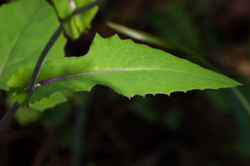
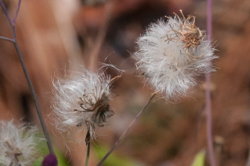
Family - Asteraceae
Common names include - cupid’s paintbrush, cupid’s shavingbrush, Flora's paintbrush, purple sow thistle.
Not native, originated in China, India, and Asia it is now naturalized in North America and other tropical / sub-tropical regions of the world, very common weed in central and southern Florida.
Lilac tasselflower is a annual herbaceous plant that has a basil rosette of leaves with slender erect branching stems 18-24 inches long. Leaves are lanceolate with toothed margins, alternately arranged on the stem, 1 1/2 to 6 inches long with winged petioles clasping the stem.
Flowers are a terminal inflorescence with 3-6 heads, urn shaped and flat topped, color may be pink, red, orange or white.
Savannah False Pimpernel - Lindernia grandiflora
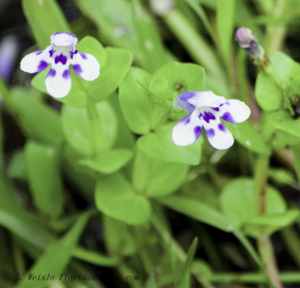
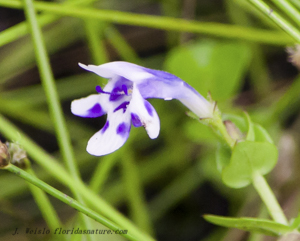
Family - Linderniaceae
Common names include Blue Moneywort, Angel Tears.
Small native herbaceous wildflower, perennial, 6 inches or less in height. Found on the moist soils of wet pinelands, pond, swamp and marsh borders in sun to partial shade. Roots develop where the stem nodes touch soil, spreading to form mats.
Leaves are opposite, clasping, bright green, fleshy and ovate to cordate. Flowers are purple and white, corolla is tubular, 2 lipped, with the upper lip much shortened, lower lip has 3 spreading lobes with blue or purple splotches.
Ohio Spiderwort, Bluejacket - Tradescantia ohiensis
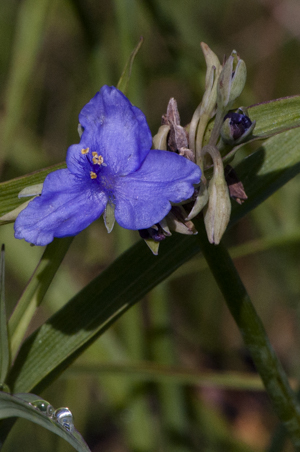
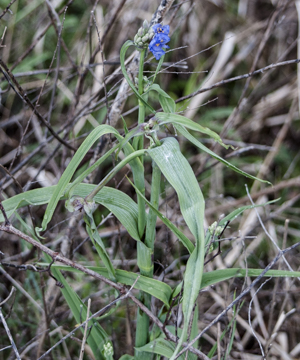
Family - Commelinaceae (Dayflower family)
Native perennial blue wildflower, common names include Bluejacket or simply Spiderwort. Clusters of showy, blue flowers with three petals usually open in the morning and wilt by the following day. In Florida, Spiderwort blooms from February through September.
Ohio spiderwort grows 2-3 feet tall with a more or less equal spread, long leaves are linear to linear-lanceolate (grass like), sessile, with a fold in the center and arranged spirally on the stem. This wildflower can be found growing on a variety of soil types in full sun to partial shade.
Mexican Petunia - Ruellia tweediana

Family - Acanthaceae
Description - Not native, invasive species. Widely used as a landscape plant, this herbaceous perennial is extremely invasive, preferring moist soils it has been found in natural areas throughout the state. Although it is often promoted as a "butterfly nectar plant" by sellers there is no evidence to support this claim. Height to 3 feet, Trumpet shaped lavender flowers that are 1-1/4'' to 1-1/2'' across.
Madagascar Periwinkle - Catharanthus roseus

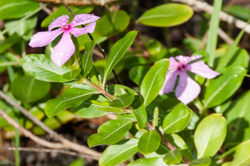
Family - Apocynaceae
Not native. Common herbaceous annual or perennial, 1-2 feet tall with a more or less equal spread.
Flowers are tubular, 1-2 inches across with the corolla having five flattened petals, flowers may be white (with or without a pinkish or yellow center), or pink to rose colored with a darker center.
Leaves are opposite, shiny on top and dark green to yellow-green, oblong to oval and 1 to 3 1/2 inches long with a lighter colored mid-rib and short petiole. Often grows in very dry, sandy, nutrient poor soils.
Glades Lobelia - (Lobelia glandulosa)
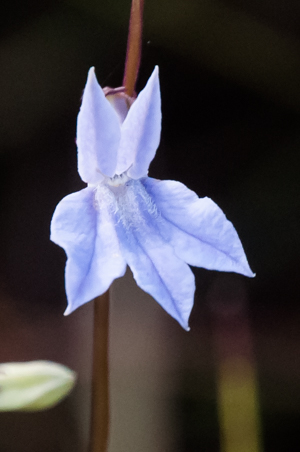
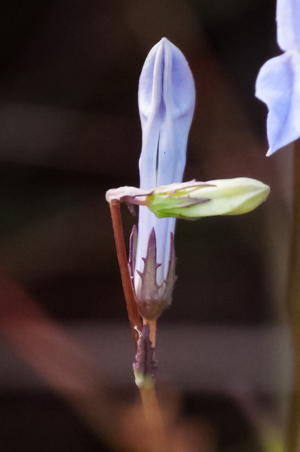
Family - Campanulaceae
Native, perennial herbaceous wildflower, 2-4 feet tall, dies back in the winter to ground level. Basil rosette of linear to narrow lanceolate leaves. Zgomorphic (two-lipped) flowers are produced on a slender, erect spike in late spring. In South Florida Glades lobelia may flower year round with almost white to deep blue flower color variations.
Stem leaves have toothed margins with glands on the tips of the teeth, hence the species name, "glanulosa". Lobelia grows in wet, slightly acidic soils of mesic pinelands, marshes, swamps, wetlands.